C-store foodservice has regained much of the sizzle it lost in 2020, marking progress that lends optimism for 2022. Customers are buying more prepared food than they did early in the pandemic and are visiting the soda fountain and coffee bar more often, but it’s still not enough to push sales to the full flame that would mark a complete return to normal for the key driver of in-store profits.
Overall, foodservice sales increased 24% in 2021 relative to 2020, preliminary data from the NACS 2021 State of the Industry survey indicate. The category includes the subcategories of prepared food, commissary, hot dispensed beverages, cold dispensed beverages and frozen dispensed beverages.
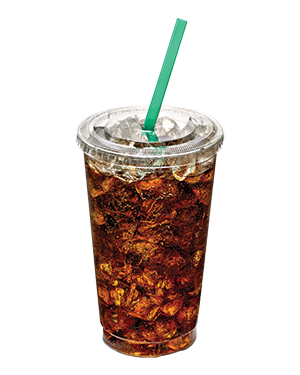 “Prepared food was the standout in the data and is leading the recovery in foodservice as consumers seek out meals and refreshments from c-stores,” said Lori Stillman, NACS vice president, research. “Consumers who may have picked prepackaged sandwiches and salads over food prepared by c-store staff on-site during the first year of the pandemic don’t hesitate now to go for that freshly made sub sandwich, slice of pizza or handcrafted burger.”
“Prepared food was the standout in the data and is leading the recovery in foodservice as consumers seek out meals and refreshments from c-stores,” said Lori Stillman, NACS vice president, research. “Consumers who may have picked prepackaged sandwiches and salads over food prepared by c-store staff on-site during the first year of the pandemic don’t hesitate now to go for that freshly made sub sandwich, slice of pizza or handcrafted burger.”
Prepared food experienced the strongest year-over-year sales growth as c-store shoppers last year gravitated more toward hot food offerings than the prepackaged commissary items they snapped up in 2020. Indeed, commissary—the only foodservice subcategory to chalk up sales growth in 2020—saw the smallest increase in year-over-year sales.
The foodservice category contributed 23% of total in-store sales and 35.5% of in-store gross profits last year. This compares with 22.6% of total in-store sales and 35.4% of in-store gross profits in 2020, and 25.4% of in-store sales and 38.9% of inside gross profits in 2019.
On an annual basis, foodservice sales edged up 1.3% to $597,180 from $589,241 in 2020 but fell short of 2019’s $651,934 in total sales. Gross profit dollars increased 2.7% to $322,968 in 2021 from $314,377 in 2020 and represented 20.1% of total gross profits. In 2019, the foodservice category notched gross profit dollars of $356,496.
Gross margin for the foodservice category stood at 36.3% in 2021, up by 2.8 points compared with 2020 but still 1.6 points lower compared with 2019.
Across all foodservice categories for 2021, gross margin percentage was 54.08%, led by hot dispensed beverages at 65.95% and frozen dispensed beverages at 65.23%. Commissary had the lowest gross margin percentage at 36.15%.
Prepared food remains the largest sales and gross profit driver within the foodservice category, accounting for 66.7% of category sales in 2021 and average gross profit dollars per store of $156,403. This compares with 66.6% of foodservice sales and $130,935 average gross profit dollars per store in 2020.
Source: CSX; www.csxllc.com
DISPENSED BEVERAGES
The self-serve areas of foodservice—especially the fountain and coffee bar—were pummeled by the pandemic due to a combination of forced closures and a plunge in morning foot traffic. Hot dispensed beverages have yet to shake off their pandemic doldrums, but the subcategory still represents the second largest portion of foodservice sales at 13.2%. Cold dispensed beverages (7.8%), commissary (6.6%) and frozen dispensed beverages (5.8%) account for the rest of foodservice sales.
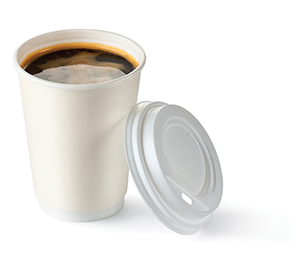 Within the hot dispensed beverages subcategory, coffee represented 65.4% of 2021 sales, cappuccino/specialty coffee represented 14.9% of 2021 sales and hot chocolate made up 13.6% of category sales.
Within the hot dispensed beverages subcategory, coffee represented 65.4% of 2021 sales, cappuccino/specialty coffee represented 14.9% of 2021 sales and hot chocolate made up 13.6% of category sales.
Sales of coffee at c-stores in the NACS SOI data set slipped 4.5% in 2021 compared with 2020, while cappuccino gained 18.9%, and hot chocolate sales jumped 48.2%. Gross margin percentage is highest for cappuccino/specialty coffee beverages at just over 73%, while coffee brings a 57% gross margin.
Relative to 2019, most hot dispensed beverage sales are still down significantly. Coffee sales on a per-store basis were 45% lower in 2021 compared with 2019, and cappuccino sales were 68% lower in 2021 compared with 2019.
“We see incremental growth in hot dispensed as commuters return to the office, school and other activities, but clearly, some c-store customers have abandoned their pre-pandemic morning routines,” Stillman said. “They still may be brewing their own coffee before heading out for their day—if they leave their house at all. Yes, it’s a challenge for convenience retailers but also an opportunity to use loyalty offers and delicious food to convince those formerly frequent guests to reconnect with your stores.”
Among cold dispensed beverages, carbonated beverages account for 63.8% of category sales, with a 5.3% increase in sales in 2021. Other cold dispensed beverage sales climbed 61% in 2021 compared with 2020.
In the frozen dispensed subcategory, noncarbonated and carbonated beverage sales both grew in 2021 by nearly 30% and carried strong margins of over 60%. Compared with 2019, however, frozen carbonated beverages sales are 43% lower, but non-carbonated sales are 34% higher than before the pandemic.
COMMISSARY
Commissary typically accounts for the smallest percentage of sales within foodservice, but the subcategory has seen strong growth during the past two pandemic years as shoppers discovered that their local c-stores sell frozen meals or ready-to-eat meals that they would have purchased at a grocery store or a fast-food restaurant in the past.
 In 2021, commissary sales were split across a few subcategories: ready-to-eat meals (roughly $900 in sales per store, per month), sandwiches/wraps (roughly $800 in sales per store, per month) and thaw/heat/eat meals at nearly $650 per store, per month.
In 2021, commissary sales were split across a few subcategories: ready-to-eat meals (roughly $900 in sales per store, per month), sandwiches/wraps (roughly $800 in sales per store, per month) and thaw/heat/eat meals at nearly $650 per store, per month.
Commissary subcategory sales advanced significantly over the past year, particularly ready-to-eat meals and thaw/heat/eat meals.
The gross margin percentage for commissary subcategories remains lower than other foodservice categories at 36.2%, although sides and salads carry gross margins of more than 44%. Compared with 2019, all commissary subcategories were up sharply, including sandwiches/wraps, which gained 20.7%.
Rethinking Foodservice
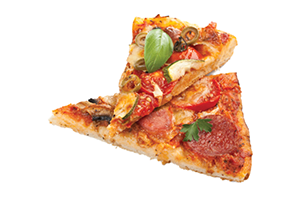 Life in general—and retailing in particular—took a big hit in 2020 when COVID-19 spread around the globe. Two years later, the U.S. is learning to live with the coronavirus, and convenience retailers are facing new challenges as foodservice marks a turnaround.
Life in general—and retailing in particular—took a big hit in 2020 when COVID-19 spread around the globe. Two years later, the U.S. is learning to live with the coronavirus, and convenience retailers are facing new challenges as foodservice marks a turnaround.
“For Casey’s, we continue to see an increase in prepared food sales, and the key item to return to growth is our pizza-slice business, which is currently up 18% in unit growth compared to the prior fiscal year,” said Richard Guidry, director, food and beverage at Casey’s, based in Ankeny, Iowa. “The morning daypart overall is a bright spot for Casey’s. Our breakfast launch in September 2021 has continued to drive momentum, and we’re seeing growth in our freshly made, packaged wraps and sub sandwiches.”
For Kum & Go of Des Moines, Iowa, the pandemic brought in new customers. “It looks like people traded some of their large format retail stops for smaller format options like convenience,” said Tracy Ging, chief marketing officer, Kum & Go. “That ended up being a great time to expand our offering and reintroduce the convenience of convenience. People are ready to eat out again, and we think that’s a great time to offer something different.”
Consumers may be eager to treat themselves to prepared meals, but they also are mindful of rising inflation—and gasoline prices. When consumers have to pay more at the pump, their spending is hampered inside the store.
“Customer count is better now than it was last year, but high gas prices are hindering the increase,” said Ray Rabroker, general manager, Slovacek’s, a West, Texas, travel center located on a major interstate between Dallas and Austin. “January and February looked good, but about two weeks after the Ukraine invasion, gas prices jumped through the ceiling.”
Another challenge for convenience retailers is the rising cost of staples coupled with supply chain disruptions, Rabroker said. “We’ve probably seen the biggest increases in boxes, paper towels and napkins, and those might be the hardest things to get. We have three main vendors, and we still end up going to Amazon or Uline to find the stuff they can’t deliver.”
Labor Pains
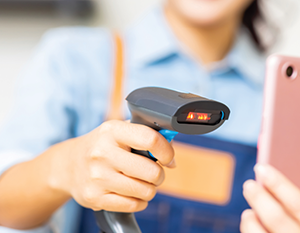 In March, the U.S. unemployment rate edged down to 3.6%, with employment in the retail sector increasing by 49,000 jobs, according to the U.S. Bureau of Labor Statistics. The retail sector employed 278,000 more people than it did in February 2020, but the labor shortage continues to be an issue.
In March, the U.S. unemployment rate edged down to 3.6%, with employment in the retail sector increasing by 49,000 jobs, according to the U.S. Bureau of Labor Statistics. The retail sector employed 278,000 more people than it did in February 2020, but the labor shortage continues to be an issue.
“We’re still dealing with it, and it’s retail-wide,” said Matt High, senior category sales manager for made to order, Sheetz. High presented the foodservice category deep dive at the 2021 NACS State of the Industry Summit in April. “We have some great teams in place, but we’d like to be able to supply more great people to the stores. You’ve got to have coverage in the store, and if you’re understaffed, everyone has to pick up the slack. It’s hard to ask people to do that.”
Texas-based TXB Stores has taken various steps to attract talent, including increased pay, referral bonuses, flexible scheduling and hiring more part-time employees.
“Our company is making a big push as part of the TXB rebrand to focus on company culture and doubling down on resources to train and provide more educational opportunities,” said Ben Hoffmeyer, vice president of marketing and merchandising, TXB. “At the end of the day, the biggest recruiting tip is ensuring you’re treating existing employees right and retaining current workers. If you can retain your current staff, they’ll help you recruit their friends and family.”
Despite the new challenges, this is the time to stay focused, said High. “We don’t want to lose all the momentum we’ve gained. A lot of the things going on now are outside our control.”
Pickup and Delivery
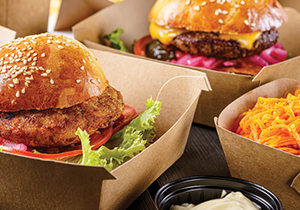 Demand for grocery delivery and food pickup options exploded during the pandemic and has continued to grow. In August 2019, online grocery deliveries and in-store pickups were a $1.2 billion business, but by October 2021, that figure had reached $6.4 billion, reports Statistica.com.
Demand for grocery delivery and food pickup options exploded during the pandemic and has continued to grow. In August 2019, online grocery deliveries and in-store pickups were a $1.2 billion business, but by October 2021, that figure had reached $6.4 billion, reports Statistica.com.
“The pandemic did not affect us much in our daily operations, although we had fewer in-store diners and more pickup and go,” said Pat Pitts, foodservice manager of The Market stores, based in Charlottesville, Virginia. “We saw less in-store business in the beginning and offered curbside pickup, but now it’s business as usual with quick pickup and to-go orders.”
The team at York, Pennsylvania-based Rutter’s stores saw a shift in customer preferences as the pandemic progressed. “The majority of our sales were takeout prior to the pandemic, so that shift wasn’t huge,” said Chad White, foodservice category manager, Rutter’s. “We adjusted our menu to better focus on what customers want for on-the-go meals and have seen great success.”
Ensuring ease of ordering via third-party delivery platforms and the latest technology was key to foodservice survival during the crisis. Neon Marketplace with headquarters in Cranston, Rhode Island, partnered with Uber Eats, DoorDash and Grubhub to connect hungry customers with made-to-order meals and snacks.
Now, the chain is working with PDI and Vroom to introduce a new mobile ordering platform. “Customers will be able to order any item in the store from their phones,” said Peter Rasmussen, director of operations, Neon Marketplace. “They can pick it up or have it delivered.”
Give Them Options
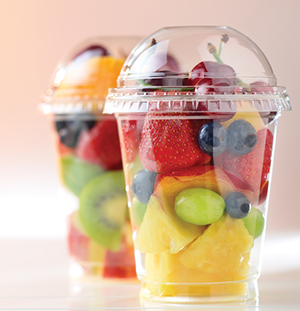 The self-serve areas of foodservice— especially the fountain and coffee bar—were hard hit by the pandemic. In fall 2021, Casey’s upgraded its coffee program with bean-to-cup technology. “We see opportunity for a return to growth in dispensed beverages, and we are confident our bean-to-cup coffee offering will help drive interest and frequency with our guests,” said Richard Guidry, director, food and beverage.
The self-serve areas of foodservice— especially the fountain and coffee bar—were hard hit by the pandemic. In fall 2021, Casey’s upgraded its coffee program with bean-to-cup technology. “We see opportunity for a return to growth in dispensed beverages, and we are confident our bean-to-cup coffee offering will help drive interest and frequency with our guests,” said Richard Guidry, director, food and beverage.
To reignite dayparts and continue to grow their foodservice business, retailers must focus on improving the quantity, quality and convenience of options available to customers, advises Kevin Smartt, president and CEO, TBX Stores. These include menu offerings, enhanced services and updated technology.
“Our industry is often criticized for serving unhealthy foods and being unclean,” he said. “C-stores trying to break through this stigma are offering healthier, fresh snacks and meal items like take-home salad kits, veggie kits and fresh fruit.
“Forecourt marketing is very important,” he said. “Having a clean, friendly environment nicely mirrors the standards for fresh-food options. This can be seen in landscaping and greenery surrounding the forecourt and fuel canopies equipped with bright LED lighting to ensure a welcoming, safe environment. It’s critical that c-stores innovate in this space as customers are grabbing and taking meals home now more often than ever.”